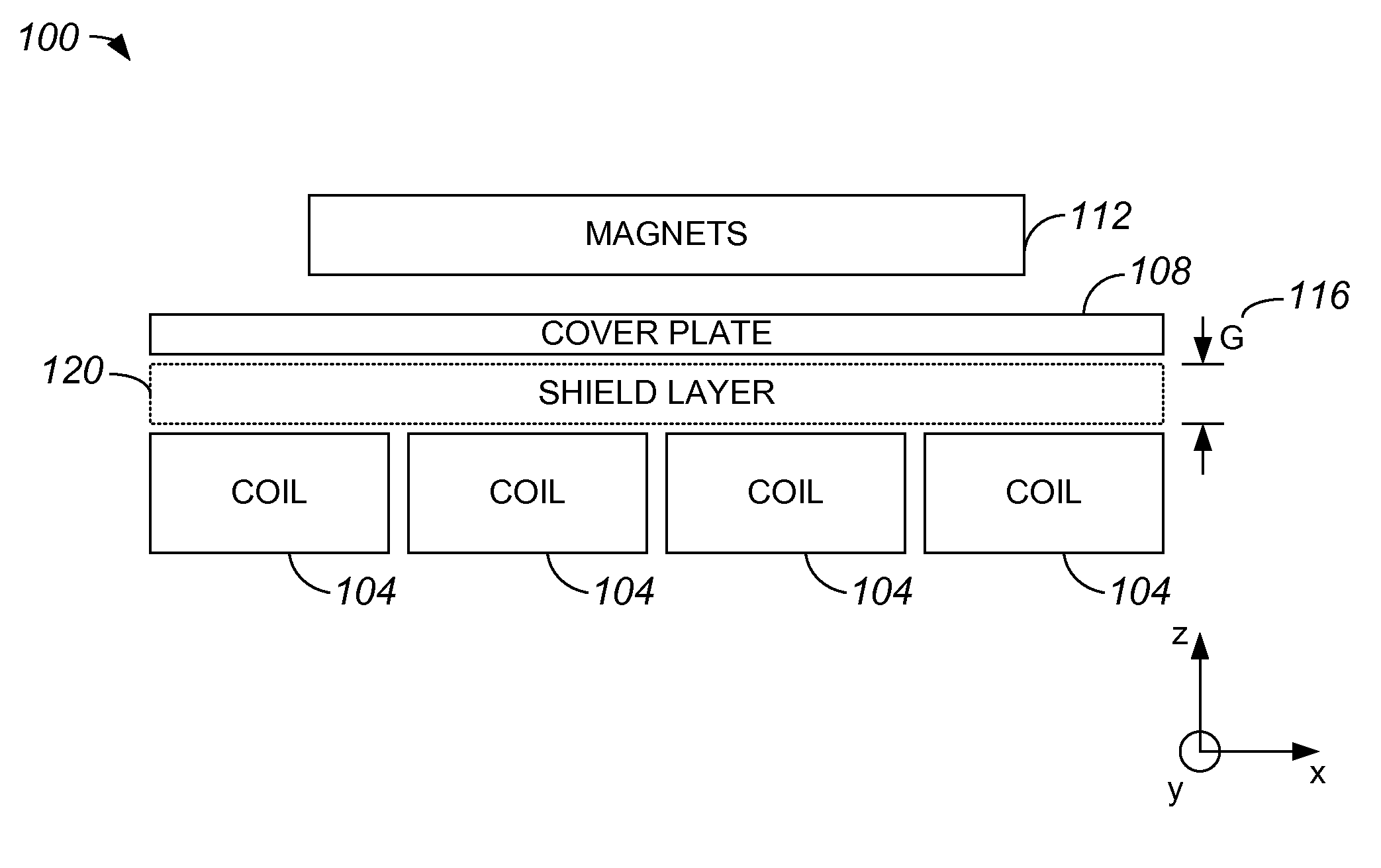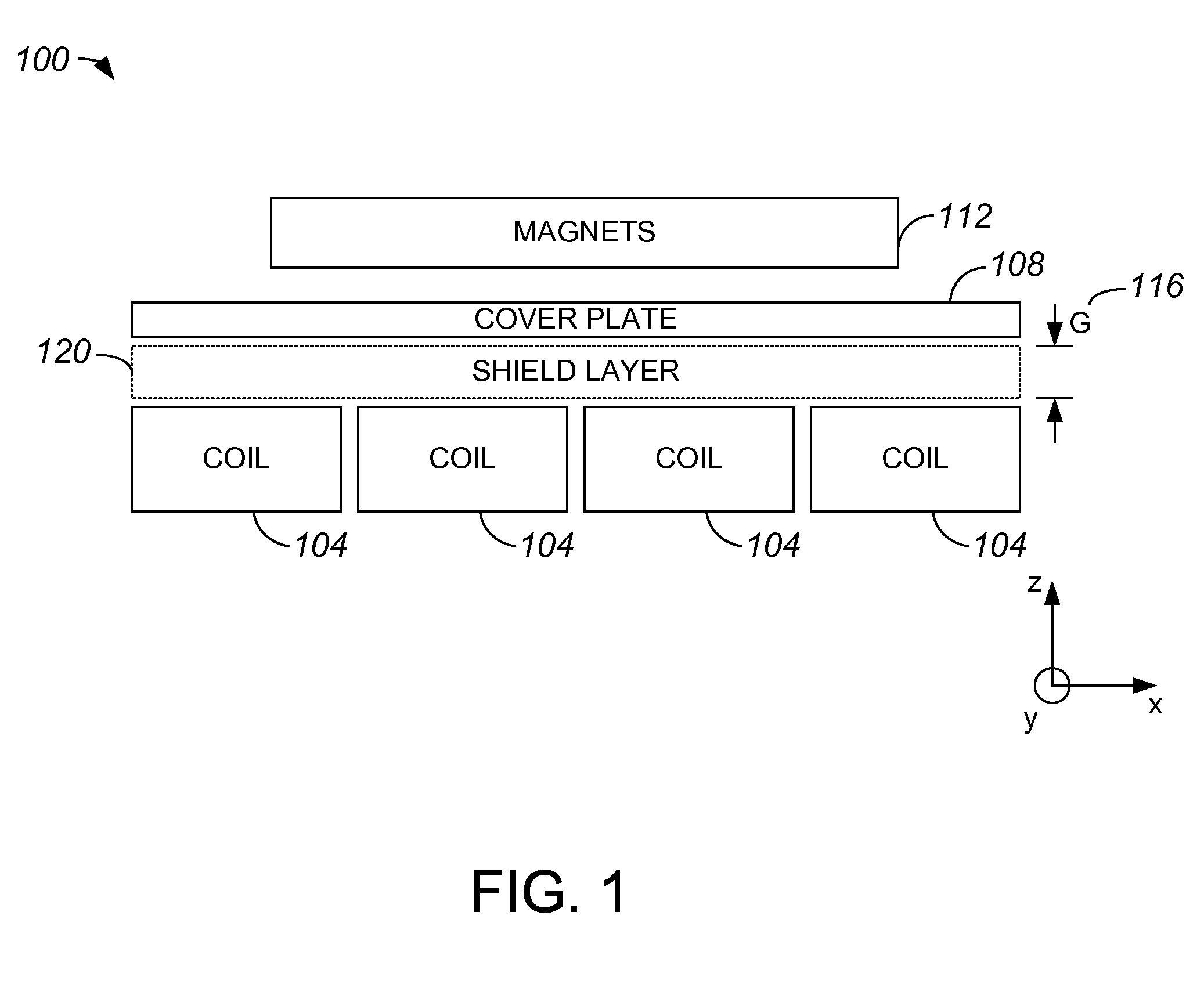Shield layer plus refrigerated backside cooling for planar motors
a planar motor and backside cooling technology, applied in the field of semiconductor processing, can solve the problems of generating a significant amount of heat for planar motors used in semiconductor processing equipment such as photolithography apparatuses, adversely affecting the accuracy of photolithography processes, and affecting the positioning accuracy of exposure apparatuses, etc., and achieves the effect of less heat and more hea
- Summary
- Abstract
- Description
- Claims
- Application Information
AI Technical Summary
Benefits of technology
Problems solved by technology
Method used
Image
Examples
Embodiment Construction
[0022]Example embodiments of the present invention are discussed below with reference to the various figures. However, those skilled in the art will readily appreciate that the detailed description given herein with respect to these figures is for explanatory purposes, as the invention extends beyond these embodiments.
[0023]To assure the performance of semiconductor processing equipment, planar motors associated with the semiconductor processing equipment are cooled. Because of space constraints in a planar motor, as well as other factors such as power level requirements, maintaining a constant temperature against a cover plate of the planar motor is generally difficult. By creating a shield layer within a planar motor that has a mixture of liquid and gas, a substantially constant temperature may be maintained at a top portion of the shield layer, e.g., at a portion of the shield layer which abuts or otherwise effectively comes into contact with a cover plate. Such a two-phase shiel...
PUM
 Login to View More
Login to View More Abstract
Description
Claims
Application Information
 Login to View More
Login to View More - R&D
- Intellectual Property
- Life Sciences
- Materials
- Tech Scout
- Unparalleled Data Quality
- Higher Quality Content
- 60% Fewer Hallucinations
Browse by: Latest US Patents, China's latest patents, Technical Efficacy Thesaurus, Application Domain, Technology Topic, Popular Technical Reports.
© 2025 PatSnap. All rights reserved.Legal|Privacy policy|Modern Slavery Act Transparency Statement|Sitemap|About US| Contact US: help@patsnap.com



